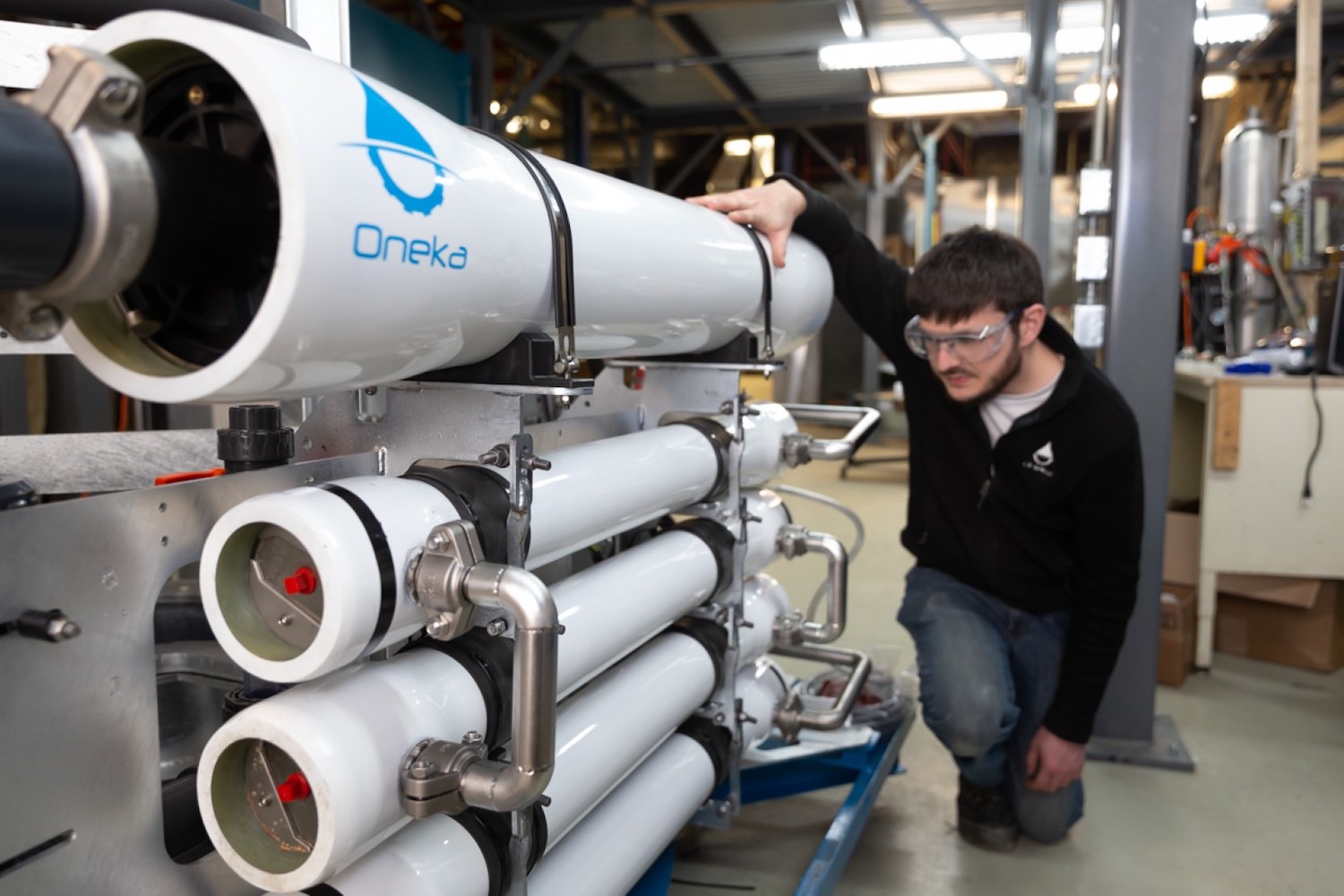EXCLUSIVE INTERVIEW: H2O Global News’ Natasha Posnett spoke with Oneka CEO and Cofounder, Dragan Tutic, about their wave powered desalination technology.
With approximately 40% of the global population living within 100km of the coast, billions of people are situated close to the action of waves. We can use this to our advantage, and address water scarcity issues, by harnessing their natural energy to fuel desalination. Desalination is required in order to meet the world’s freshwater needs, but conventional methods are unsustainable, so we need to find alternative ways to address the global water crisis. Wave powered desalination could be one of the answers.
Desalination: solution or problem?
Conventional desalination is expensive, energy intensive and environmentally damaging. It even has the potential to increase fossil fuel dependence, increase greenhouse gas emissions and exacerbate climate change further. The process also poses a threat to marine life with its water intakes and creation of large volumes of brine. It is not a sustainable solution to our water crisis issues. You cannot hope to solve one global issue by increasing another.
It is agreed upon that desalination is required in order to meet the world’s freshwater needs; the dispute is over how sustainably it is achieved. Therefore, desalination which uses renewable energy sources, provides a viable solution. It eliminates the production of greenhouse gases and focuses on a more sustainable, long term, approach to providing drinking water from the ocean.

Wave Power for Desalination
Sustainable desalination
Oneka is using wave powered desalination to help the world meet its freshwater needs in a sustainable manner. They saw a gap in the industry and used it to inspire their environmentally conscious desalination technology. Their solution is applicable to meet several needs, whether for coastal communities, industries, resorts and as a relief solution.
Oneka CEO and Cofounder, Dragan Tutic said: ‘It all started when I was travelling with my brother. We visited some really dry places, but at the same time they had massive waves crashing onto their shores with so much energy and power. I didn’t know much about desalination at the time, but I knew people were already using wave power to generate electricity. So I thought, why don’t we combine wave energy and desalination and take the electricity out of the equation completely. I wanted to create a simple and sustainable source of drinking water and leverage the fact that there is a huge amount of wave energy in the same places that are struggling with water scarcity.’
Oneka has developed a desalination system which uses natural wave power and respects the environment. It is a scalable solution which consists of a group of buoys being deployed just off the coast. The modular solution will be able to supply water for projects of 200 to 1000m3 of freshwater per day initially using arrays of 5-m buoys. Larger buoys will be used for utility scale projects in the future.
Environmentally and economically, it is much better than conventional desalination. Most importantly, it does not require any dependency on fossil fuels or create harmful CO2 emissions. All of the energy is generated from waves in the ocean. Oneka does not use chemicals and focuses on self-cleaning and low recovery to reduce membrane fouling. It also produces responsible brine and addresses dangerous water intakes. The technology is safer for marine life and maintains a healthy environment to allow species to thrive in their natural habitat. Furthermore, as it is built in the ocean, no expensive coastal land is required.
Tutic explained: ‘Desalination has always been a last option because it is expensive to operate. By creating a process that is simple and cost competitive, such as the one at Oneka, it makes sea water drinkable in a far more affordable and sustainable way. In the long run we need to move towards sustainable solutions for desalination. Using wave energy seems to be a very logical way because the energy and resource are in the same place. It makes it possible to use the technology in a cost effective way. A large percentage of the population lives near the coast, so it is taking advantage of where the water use is and where the renewable source of energy can be found.’
Oneka is already growing rapidly, showing that there is a demand for this sort of technology. Over the last 6 years they have deployed 6 generations of devices- testing them both in house and in the ocean. This has left them with an efficient, low maintenance, cost effective solution for desalination. It can be deployed within an hour and is completely serviceable from the surface. By the end of this year they hope to have a project up and running in Florida and are also aiming to scale their units from 3.5 metres up to 5 meters for future clients.

Harnessing natural wave power for desalination
Where will wave power take us?
The pairing of desalination with wave powered renewable energy has created excitement in the water industry. It appears that the engagement will continue, but it may be a while until we are seeing it applied at a large scale. Evolving renewable desalination technologies will provide significant opportunities to address global water scarcity issues. Wave powered desalination has the potential to assist the development of environmentally friendly and economically sustainable desalination plants for coastal communities.
Tutic summed it up: ‘There is still work to be done, but wave powered desalination is the way to go.’
Do you have an article to share? Click here to submit or if you’d like to subscribe to our weekly newsletter, click here.







